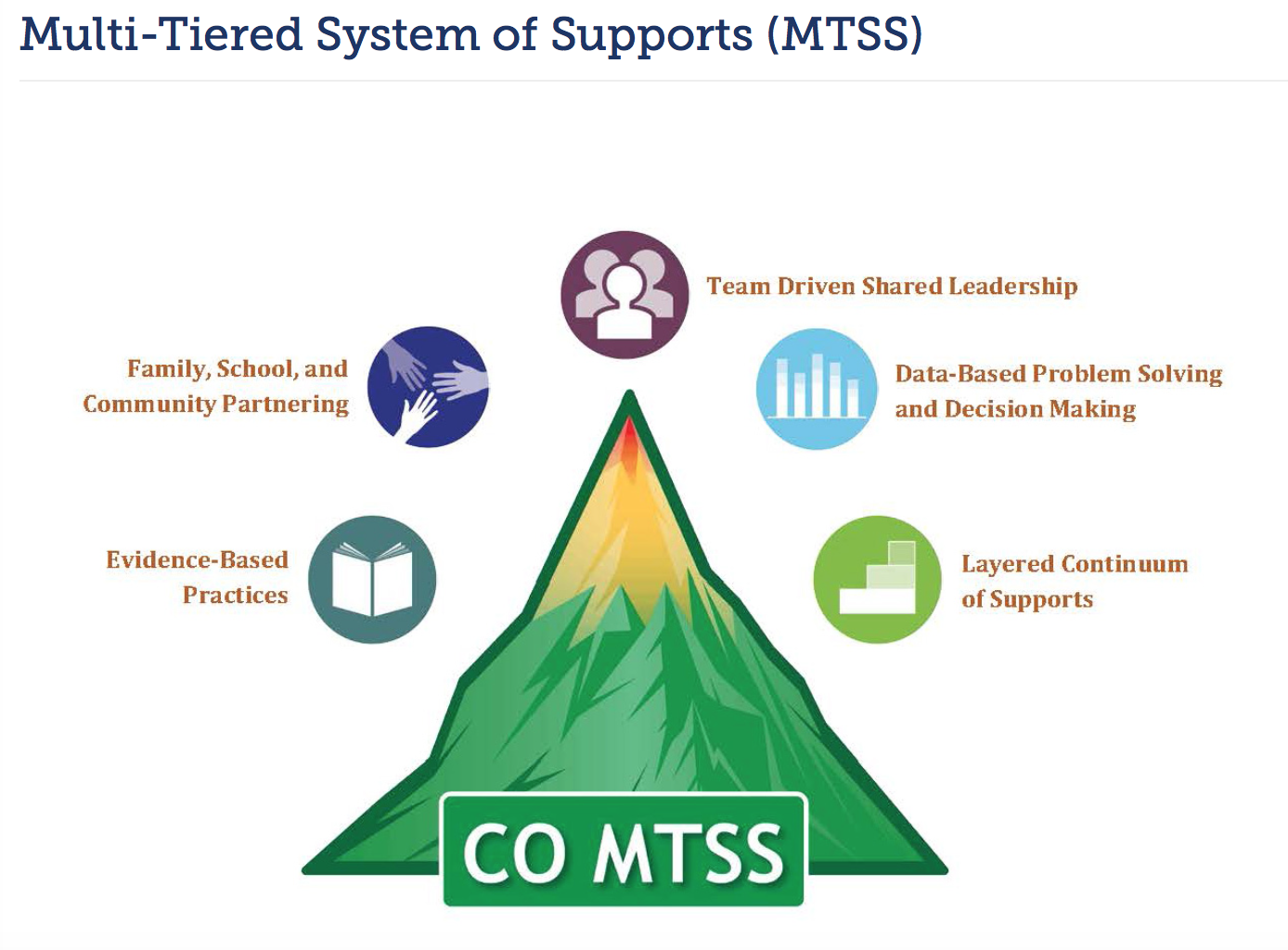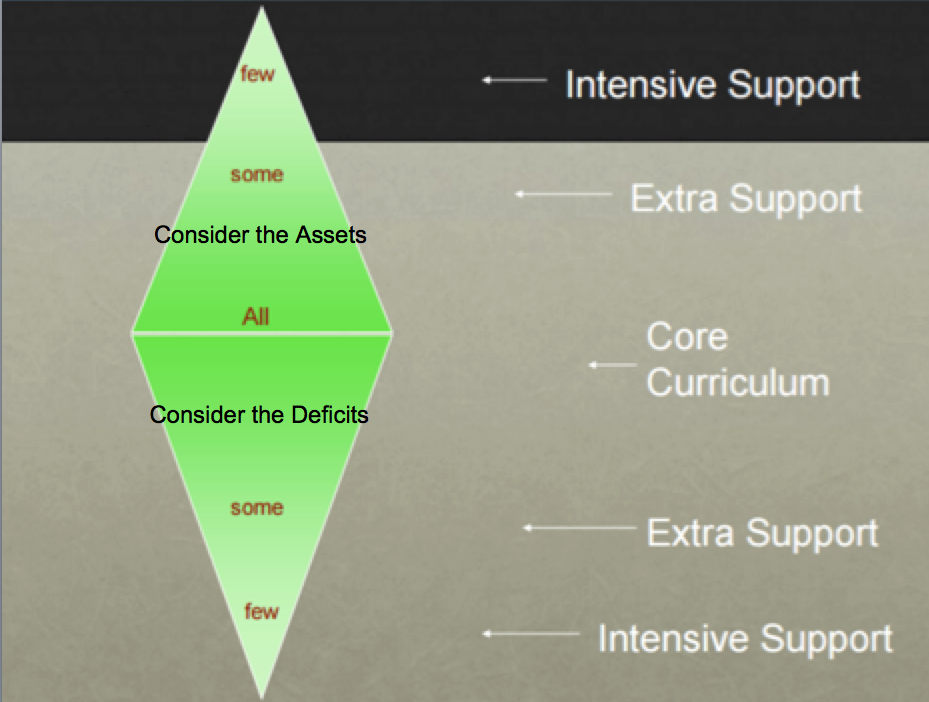Gathering Data
| Site: | Colorado Education Learning Management System |
| Course: | 2e (Open Access) Supporting Twice Exceptional Learners |
| Book: | Gathering Data |
| Printed by: | Guest user |
| Date: | Saturday, 6 December 2025, 12:09 AM |
Description
Lesson 5: MTSS, Giftedness, Strength-Based Goals & Programming, and Collaboration
Peeling Back the Layers
When things don't seem right with a student, or the student is clearly unhappy or not functioning well at school, getting a diagnosis can be a relief. But often it is not that simple. Documentation shows that approximately a quarter to one-third of all children with ADHD also have learning disabilities (U.S. Department of Education, Office of Special Education and Rehabilitative Services, Office of Special Education Programs, Teaching Children With Attention Deficit Hyperactivity Disorder: Instructional Strategies and Practices. Washington, D.C., 2008). Similar rates of co-morbid (co-occurring) conditions hold true for kids with learning disabilities, Autism Spectrum Disorder, and other conditions.
There are several reasons why it's easy to miss co-morbid conditions during an initial assessment. If one condition is having an overwhelmingly strong impact on the child, it can mask others. If a child's area of special needs fall in a variety of realms, the first assessor may not have the expertise in the other areas. When you are working with 2e children, the child's giftedness can mask any special needs, such as a learning disability. Quite often the 2e child becomes quite adept at using their intelligence to compensate for areas of weaknesses, and the child may seem average in your classroom.
How do we address this problem? We have to stay vigilant and look for signs that something may have been missed. We have to be in tune with the student and look for discrepancies. We have to get to know the student and focus on his or her strengths. Peeling back the layers of the onion for a 2e student might feel like a never ending chore; however if you stick with it, you can begin to discover what the child needs to find success.
Student Data
Do you have a data collecting form or process in your district or school? What do you do with your data once you have it; who owns it; where is it housed; how is it accessed for monitoring purposes?
There is not just one pathway to collect data when working with students, but you should have a uniform system within your school or district in order to streamline the process for RtI.
When you are beginning the RtI process with a potential 2e child for whom you might have concerns, you want to ensure you are looking at the whole child. Remember - they are complex. They have many layers to them and often what you see on the surface is not all that exists. You want to get to really get to know them to see what could be the "root cause" of what might be happening with the child both in and out of school. You are looking at every aspect of the child whether it is academic, behavioral, emotional, physical, or more.
Are 2e Students Part of MTSS?
Of course! All students are part of MTSS. Think of MTSS as an umbrella under which all supports for students live. MTSS includes RtI (Response to Intervention) and PBIS (Positive Behavior Intervention System) among other elements. MTSS came about because a group of educators realized that RtI focused primarily on academic and behavioral supports which does not support the whole child. By incorporating PBIS into the RtI framework MTSS was born - you now have a system (or framework) to support the whole child - academic, social, and emotional.
The key to understanding MTSS is realizing that it is a framework, not a program, and it looks at assets just as much as deficits.

Supporting a 2e Learner Within the MTSS Framework
Using Dan Buckley's (2005) illustration about personalized learning (below) we can think of support for 2e students as stacked triangles. In the figure, all, some, and few refer to the student population. All students receive universal support (Tier 1). Some students receive additional support while continuing to receive universal support (Tier 2). A few students receive all the support represented by the bottom and middle of the triangle, but also receive the intensive support they need. Instead of only seeing how we need to support weaknesses/deficits/disabilities, we see how we must also offer learning opportunities to develop strengths, talents, and gifts. Twice-exceptional students are so complex because some of them might need Tier 2 or 3 support on both points of the 2 triangles!

Family, School, and Community Partnering
The families of twice-exceptional learners need our support and will contribute to our understanding of their children. They will also provide needed support outside of school.
Be proactive rather than reactive. In the end, the extra effort you put in initially will pay dividends. Include family members - early and often!
How to Foster Parent Collaboration
Personalize parental contact via phone calls, emails, and face-to-face conferencing.
Consider identifying a staff member to be the main contact for the parents.
Communicate positive behaviors and strength area of student prior to discussing challenges.
Obtain information from the parent about their child (strengths and challenges).
Promote and include parental input about programming and interventions addressing strengths and challenges.
Provide ongoing communication regarding the problem solving process and results of programming and interventions.
Ensure that staff members working with the student have all relevant information and support the plan.
